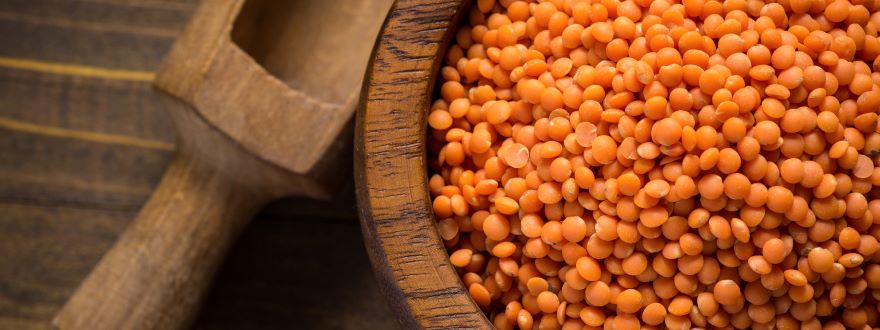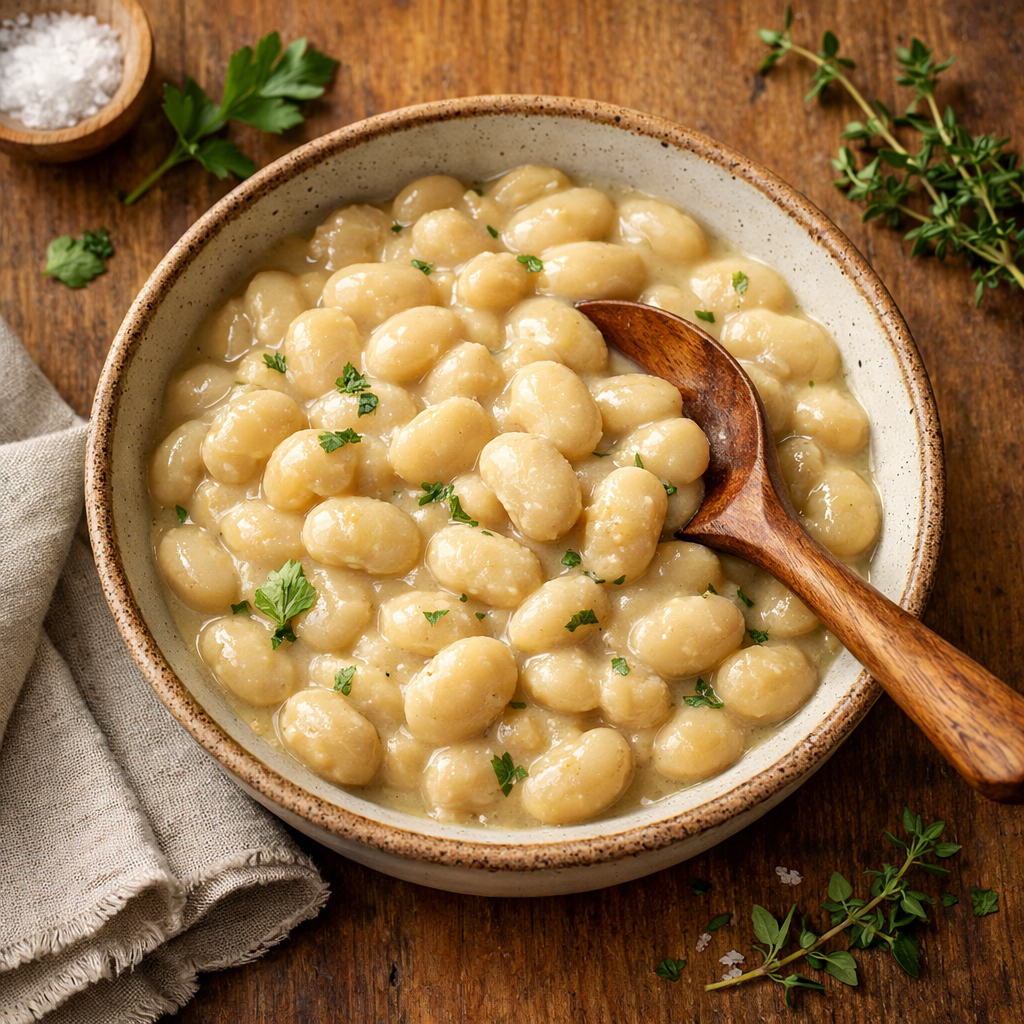Whole red lentils are a versatile and nutritious ingredient that has gained popularity in kitchens around the world. Whole red lentils are nutrient-rich and contain protein, fiber, iron, vitamins, and minerals. Include whole red lentils in your diet for health benefits and versatility in cooking.
Whole red lentils’ color, taste, and texture set them apart from other lentil varieties.When it comes to cooking with red lentils, they generally require a shorter cooking time than other types of lentils and offer a softer consistency. This makes them perfect for dishes like soups, stews, and purees. In addition to their culinary uses, whole red lentils are also considered an affordable and sustainable source of plant-based protein, making them an ideal meat substitute for vegetarian and vegan diets.
Key Takeaways
- Whole red lentils provide a wealth of nutrients and health benefits.
- Their versatility makes them perfect for various dishes, from soups to meat substitutes.
- Buying and storing lentils is simple, making them an affordable and accessible ingredient for every kitchen.
Understanding Red Lentils
As someone passionate about healthy eating, I’m always on the lookout for nutritious and versatile ingredients. Among my favorite legumes are red lentils, which are not only tasty but also packed with nutritional benefits. Unlike other lentils, such as brown and green, red lentils have a more delicate flavor and texture, making them a popular choice in a variety of dishes.
Whole red lentils have a beautiful orangey-red color in their cotyledon and an earthy brown testa. These lentils do not undergo secondary processing like decortication, splitting, or polishing, which means their testa remains intact, giving the lentil its brownish appearance source.
I love the fact that red lentils have a mild and slightly sweet flavor, making them perfect for various recipes. They are an excellent option for soups, stews, and curries, imparting a rich color and velvety texture to the dish. One significant difference between whole red lentils and split red lentils is the way they measure and weigh, with split red lentils packing more tightly in a cup and weighing differently than whole red lentils source.
In terms of nutrition, I cannot emphasize enough how healthy red lentils are. They are a good source of vitamins like folate, essential for cell division and DNA formation, and they also contain significant amounts of vitamin B6, thiamin (B1), and pantothenic acid source. Moreover, red lentils are rich in essential minerals, particularly iron and potassium.
In conclusion, red lentils are an excellent addition to a healthy diet, providing both flavor and nutrients. With their mild, slightly sweet taste, versatile texture, and nutritional benefits, it’s no surprise that I turn to red lentils as a staple in my meal planning.
Varieties of Lentils
When it comes to lentils, there are several varieties that you may come across in various dishes and recipes. As a food enthusiast, I find these different types of lentils fascinating due to their unique flavors and textures. Allow me to share with you the main varieties of lentils that you might encounter.
Green lentils are one of the most common types, known for their mild and earthy flavor. They hold their shape well during cooking, making them an excellent choice for salads or as a side dish. You’ll often find these in recipes where a firmer texture is desired.
Brown lentils are similar to green lentils in flavor, but they have a slightly stronger and earthier taste. They also hold their shape well when cooked, making them versatile for various dishes such as soups, stews, and even as a meat substitute in vegetarian and vegan recipes.
Yellow lentils are an interesting variety with a bright hue that ranges from pale yellow to deep golden. They have a nuttier flavor compared to green and brown lentils and cook more quickly, often breaking down into a creamy consistency.
Black lentils, also known as Beluga lentils, are small, round, and have a gorgeous deep black color. They have a more robust and slightly earthy flavor compared to other varieties. When cooked, they retain their shape and firm texture, making them ideal for salads or as a side dish. Their striking appearance also adds a visual appeal to a variety of dishes.
I hope this brief overview of the different varieties of lentils helps you better understand the versatility and charm of these humble legumes. From green, brown, yellow, to black lentils, each variety brings unique flavors and textures to the table. So go ahead and explore the world of lentils and give your taste buds a delightful and nutritious treat.
Nutritional Value
As a fan of whole red lentils, I appreciate their nutritional benefits. In just half a cup of cooked lentils, there are 140 calories, 12 grams of protein, 23 grams of carbohydrates, and 9 grams of fiber source. These edible seeds are not only high in protein, which helps me maintain my muscles, bones, and skin, but they also provide important vitamins and minerals.
One standout nutrient in whole red lentils is iron. As a source of plant-based protein, red lentils are rich in non-heme iron, which is essential for my overall energy and well-being source.
Another important nutrient found in red lentils is fiber. With 15.6 grams of fiber per one-cup serving, it helps in promoting digestive health and maintaining a healthy weight source.
Whole red lentils also provide a good source of folate, a B-vitamin that is crucial for cell growth and metabolism source. Additionally, they are rich in magnesium, a mineral that plays a vital role in nerve and muscle function, bone health, and blood sugar regulation source.
Other essential nutrients in red lentils include zinc, which is crucial for my immune health, and a variety of vitamins and minerals, such as calcium, potassium, and other B-vitamins source. All these nutrients combined make whole red lentils a nutritious and versatile addition to my diet.
Cooking with Red Lentils
As a culinary enthusiast, I find red lentils to be incredibly versatile and delicious ingredients. They can be used in a variety of dishes, providing a nutty flavor and slightly mushy texture when cooked. Cooking with red lentils is straightforward and requires only a few basic ingredients.
To start cooking red lentils, I usually rinse them thoroughly to remove any debris or bad grains. Soaking is optional, but I find it unnecessary as they cook quickly without it. The basic water-to-lentils ratio is 1:2, meaning for every cup of lentils, I add two cups of water. Cooking can be done on a stovetop or in an Instant Pot, as per preference.
When it comes to transforming red lentils into delightful dishes, the possibilities are endless. Staples like onions, garlic, and ginger often serve as a base for enhancing the flavor. A selection of spices such as curry powder, turmeric, cumin, coriander, and chili pepper adds depth and warmth. And don’t forget herbs like cilantro and parsley for finishing touches!
Red lentils are fantastic in soups, curries, and rice dishes. I like to pair them with a variety of vegetables like tomatoes, bell peppers, or carrots, and sometimes even yellow split peas.
When cooking red lentils with rice, ensure that both grains are cooked to tender perfection without becoming overly mushy. Soups, on the other hand, call for more water to be added, retaining sufficient liquid throughout the cooking process. To add more interesting flavors to red lentil soups, try using stock instead of plain water.
Whenever I include red lentils in a dish, I experience the ease of incorporating them into my daily meal plans. Not only do they provide essential nutrients, but they’re also packed with satisfying flavor. Some favorite creations include tahini red lentil soup, red lentil curry with coconut milk, and red lentil dal with chili peppers.
Next time you find yourself pondering what to cook, consider exploring the delightful world of red lentils. From rich soups to spicy curries, these tiny grains offer endless possibilities to excite both your taste buds and your sense of culinary adventure. Happy cooking!
Lentils as a Meat Substitute
As someone who enjoys exploring different food options, I have found lentils to be a fantastic meat substitute. Their high protein content and hearty texture make them an ideal addition to various plant-based dishes. Half a cup of cooked lentils contains 12 grams of protein and only 140 calories, making them a nutritious and versatile option.
I’ve discovered that brown and green lentils are the best choices when substituting them for ground beef, as they have a milder flavor and hold their shape better when cooked (source). This allows them to absorb the flavors of the dish and maintain a similar texture to crumbled, cooked ground beef. Red lentils can also be used, but they tend to break down more when cooked and may create a mushier texture.
When I use lentils in soups or stews as a meat replacement, I prefer ivory or golden lentils because they retain their shape during longer cooking times (source). This ensures a pleasant and satisfying bite in dishes like minestrone or bean soups.
In my experience, whole red lentils have been an excellent meat substitute in dishes like pot pies and salads (source). They maintain their shape and texture, providing a more substantial mouthfeel, similar to that of meat.
Lastly, I realized that lentils are not only a delicious substitute for meat, but they also offer numerous health benefits. They are rich in fiber, potassium, and vitamin B-6, making them a nutritious and satisfying choice for plant-based meals (source).
Storing Lentils
Storing lentils properly is important to maintain their freshness and nutritional value. As a staple food and pantry essential, I make sure to store my lentils correctly to keep them in optimal condition for cooking.
To store lentils, I always choose a cool, dry, and dark place, away from direct sunlight and moisture. This helps to maintain their quality and prevents them from going bad. The optimal storage temperature for lentils is around 40°F to 60°F (4°C to 15°C) 1.
I prefer to store my lentils in a sealed package or an airtight container. This ensures that they are protected from any moisture or other contaminants, and it also helps to maintain their flavor. Dried lentils have an indefinite shelf-life and are a valuable home product due to their nutrition and resilience against drought-like growing conditions.
In my experience, following these simple storage guidelines ensures that my lentils stay fresh, flavorful, and ready for culinary use. Remembering to keep them in a cool, dark, and dry environment in an airtight container will extend their shelf life and make them a valuable addition to my pantry essentials.
Choosing and Buying Lentils
When I decide to buy lentils, there are a few factors I keep in mind. First, I consider the type of lentil that will best suit the recipe I’m preparing. There are many types of lentils, including whole red, green, brown, and even specialty varieties like beluga and puy.
For whole red lentils specifically, I have encountered three main types: corticated whole red lentils, decorticated whole red lentils, and split red lentils. Each of these types has its own subsets and uses. Generally, I buy whole red lentils in bulk to have on hand for various recipes. They are the less-processed, whole version of the red lentils found in grocery stores.
When shopping for lentils, I check their packaging to ensure they’re free from debris and dirt. I prefer purchasing organic red lentils when available as these are grown without the use of synthetic pesticides or chemicals, providing a healthier and eco-friendlier product. Furthermore, organic red lentils tend to have a richer flavor and texture.
If time is a constraint, I consider buying canned lentils. Canned lentils save time and are a handy alternative for busy days, despite having a different texture and taste. However, I always remember to drain and rinse canned lentils to reduce sodium content and any potential additives.
When choosing between specialty lentils like beluga or puy, keep in mind their unique characteristics. Beluga lentils are black and spherical, while Puy lentils are greenish-gray and from France’s Puy region. Both types have a firm texture, making them great choices for salads and side dishes.
In conclusion, I can choose the right lentils for my recipes by type, processing, and origin. This helps me shop smarter and use the best ingredients in my dishes.
Frequently Asked Questions
- What is the cooking time for whole red lentils? Whole red lentils generally take longer to cook than split red lentils. They usually require around 15 to 20 minutes of cooking on a stovetop. However, cook times may vary depending on your specific recipe and desired texture.
- What is the nutritional difference between whole and split lentils? The nutritional values between whole and split lentils are similar, as they come from the same plant. Both provide a good source of protein, fiber, iron, and other essential minerals. Split lentils have a shorter cook time and softer texture than whole lentils due to differences in texture.
- Do whole red lentils need to be soaked before cooking? While it’s not necessary to soak whole red lentils before cooking, doing so can help decrease cook time and improve their overall texture. Soaking for a couple of hours or overnight can help soften the lentils and ensure a more even cooking process.
- How do whole red lentils differ from split red lentils? Whole red lentils are unsplit, having a round shape, and often have a slightly nutty flavor. They take longer to cook compared to split red lentils. On the other hand, split red lentils cook faster and result in a softer texture when cooked.
- What are some popular recipes using whole red lentils? Whole red lentils can be used in a variety of dishes, such as curries, soups, stews, and salads. Some popular recipes include red lentil dal, red lentil soup with lemon, and warm red lentil salad with roasted vegetables. You can also get creative by incorporating whole red lentils into your favorite dishes for added texture and nutrition.

*We may earn a commission for purchases made using our links. Please see our disclosure to learn more.



